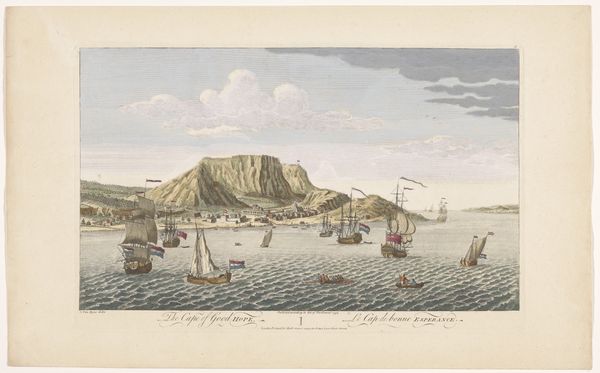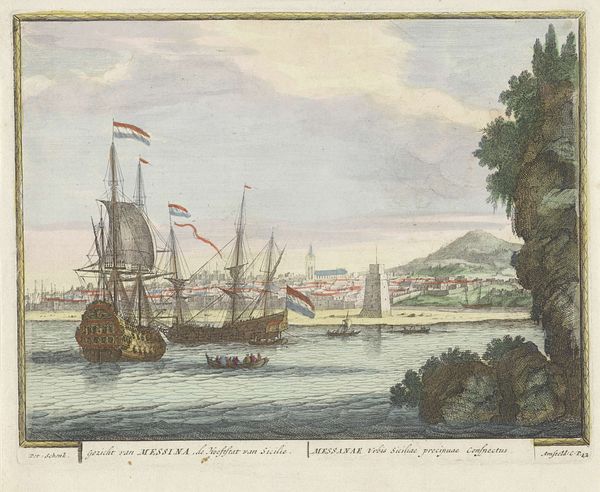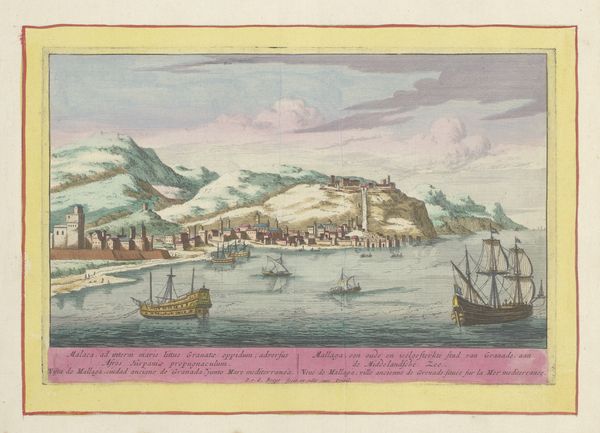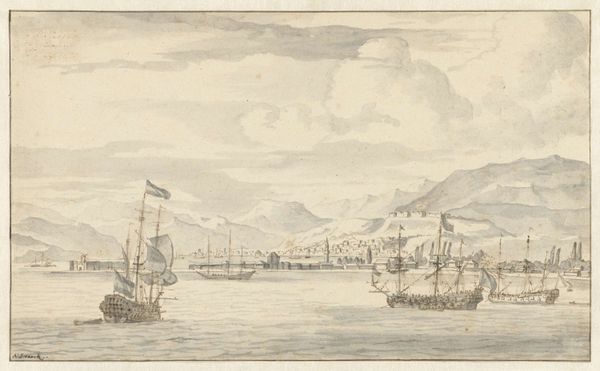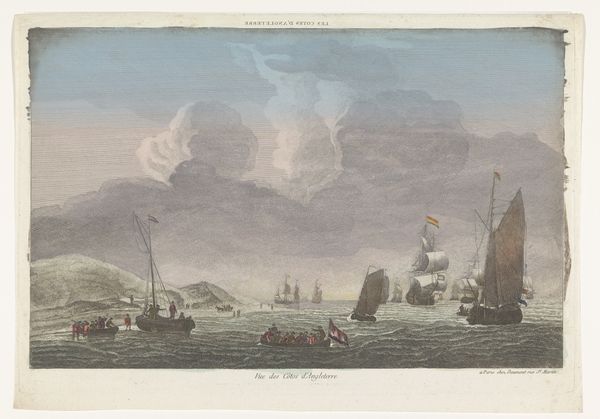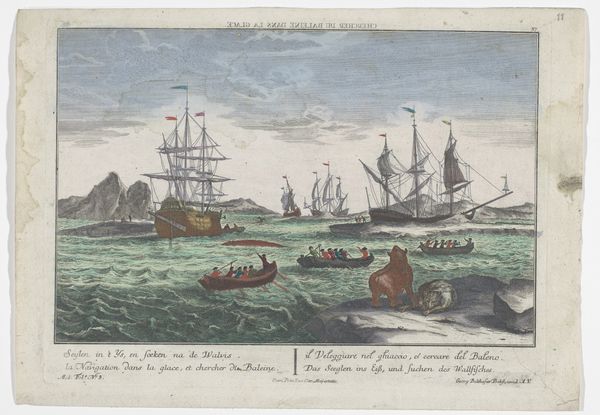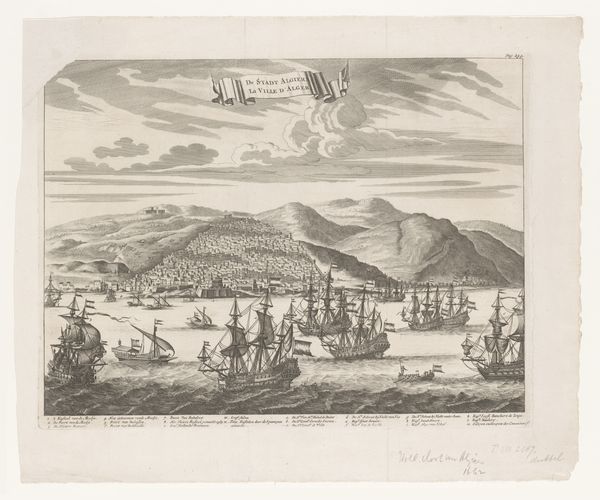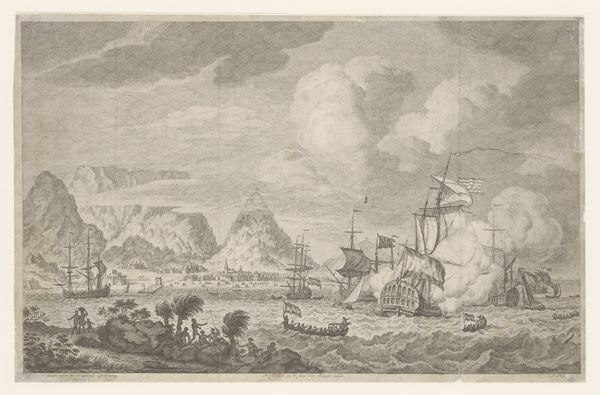
print, watercolor
#
baroque
# print
#
landscape
#
watercolor
#
coloured pencil
#
watercolour illustration
#
genre-painting
#
watercolor
Dimensions: height 260 mm, width 404 mm
Copyright: Rijks Museum: Open Domain
Curator: Here we have "Gezicht op het eiland Sint-Helena," or "View of the Island of Saint Helena," dating back to 1754, crafted by Robert Sayer. It is currently held at the Rijksmuseum. Editor: My first thought is that the composition is very formal, almost staged. The ships seem carefully placed, the island looms imposingly… It feels less like a spontaneous vista and more like a symbolic assertion of power. Curator: Exactly! Given its purpose as a print, likely intended for wide distribution, this formalized approach reinforces its socio-political function. It visualizes and promotes the East India Company's reach and domain. Look at the medium, too. The watercolour evokes scientific documentation, making the statement seem authoritative. Editor: So, the use of watercolour on a print becomes a tool, subtly framing it as objective truth rather than artistic interpretation? The materiality itself is complicit in conveying a message of authority? I'm thinking about the labourers producing both the materials and printing and how that plays into larger systems of control. Curator: Precisely! Furthermore, consider Saint Helena itself. Remote, but strategically crucial for trade routes. Sayer presents it not just as land, but as a hub of logistical power for the Company's activity and the global supply chains that sustained empires. This picturesque scene, though beautiful, carries significant economic weight. The visual readily converted into tangible resource acquisition for the British Empire. Editor: It is such a potent example of how imagery can act as a vehicle for asserting dominance. Thinking about its exhibition, perhaps it was designed to stimulate mercantile endeavors by romanticizing overseas territorial operations within London galleries and government settings? What message was delivered by depicting a remote island in Europe through the means of artistic labor and printed artifacts? Curator: And to make it visually appealing too, not as mere territory, but rather like a spectacle or a destination. The choice of rendering evokes naturalism in depicting both island landscapes and seaborne commercialism to bolster the British Empire's expansion. The print bridges aesthetics and imperial pursuits. Editor: Reflecting on this image, I see a reminder that even seemingly innocuous landscapes are woven into the larger structure that governs societal, economic, and even artistic values. The print's appeal really belies the mechanisms of labor needed for empire-building. Curator: Yes, by unveiling some processes of power entangled with it, hopefully our considerations today let it resonate a bit differently for you, too.
Comments
No comments
Be the first to comment and join the conversation on the ultimate creative platform.
